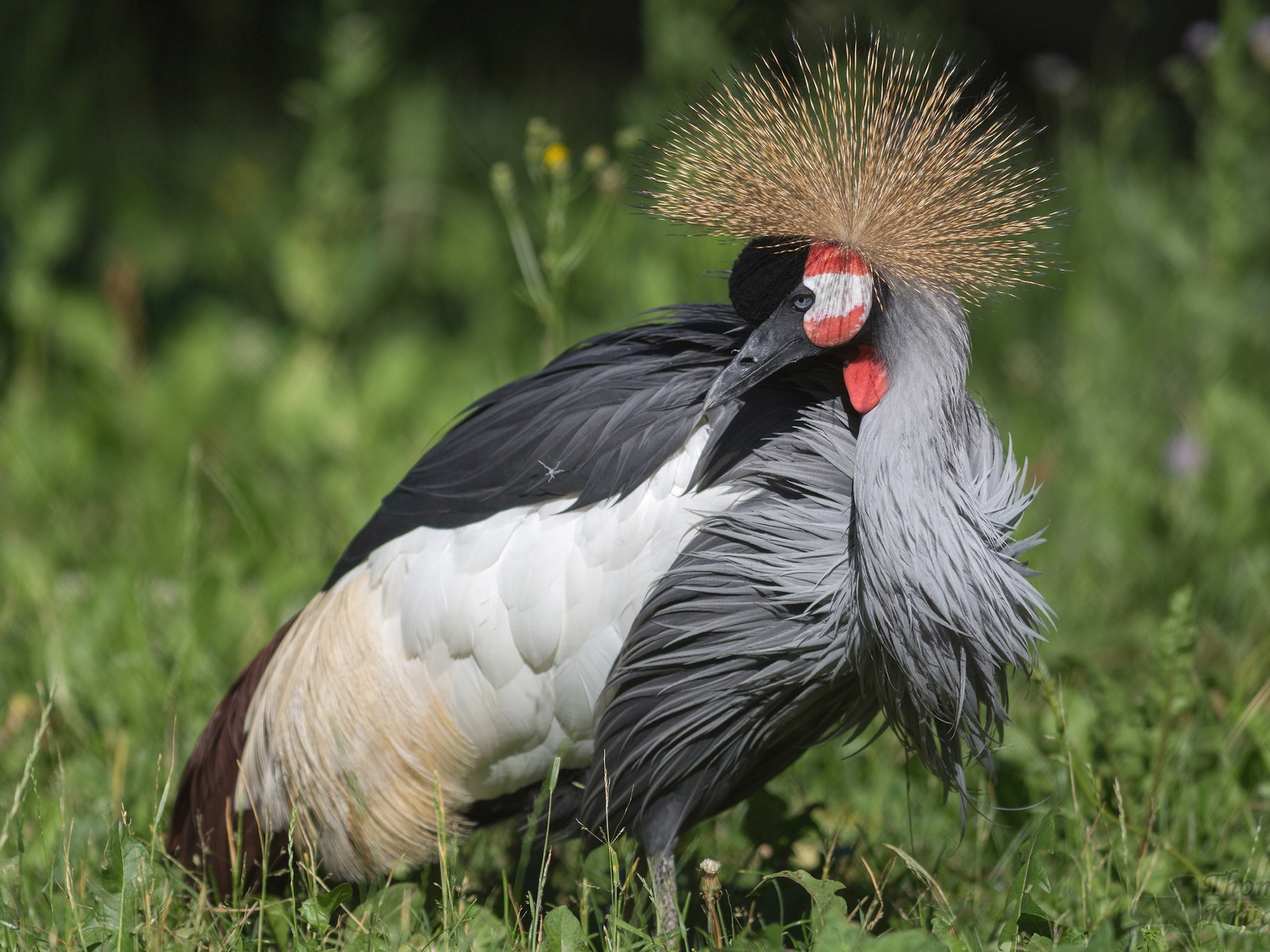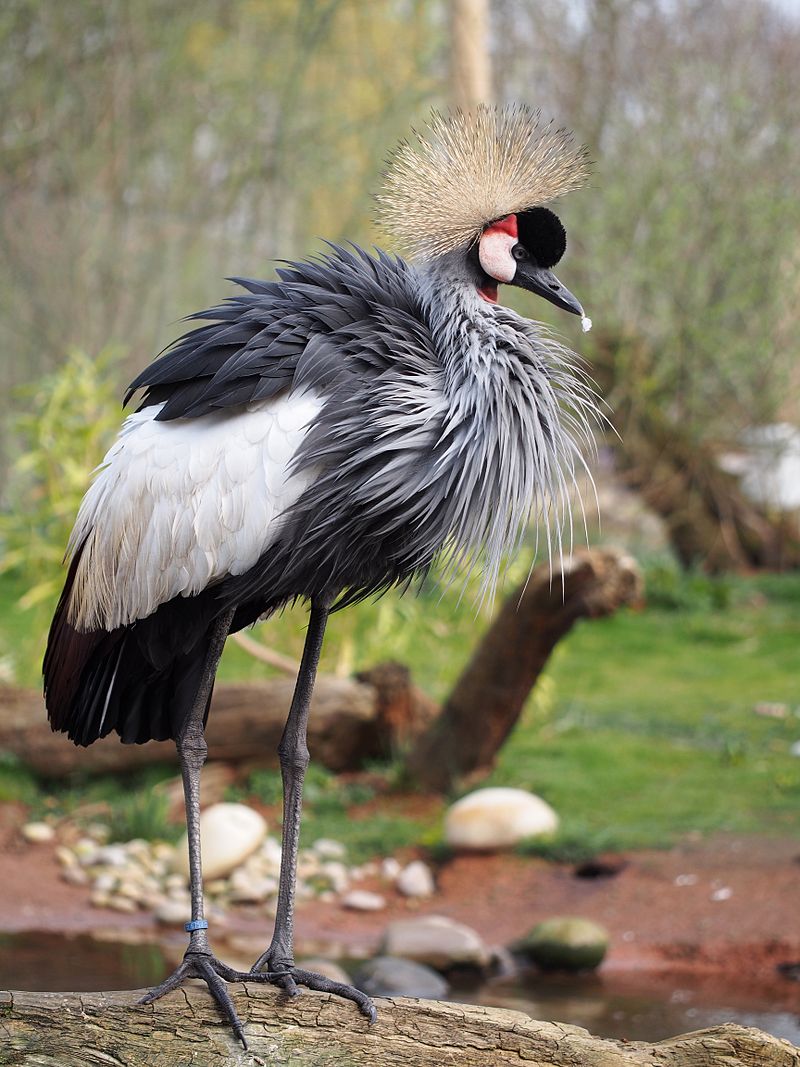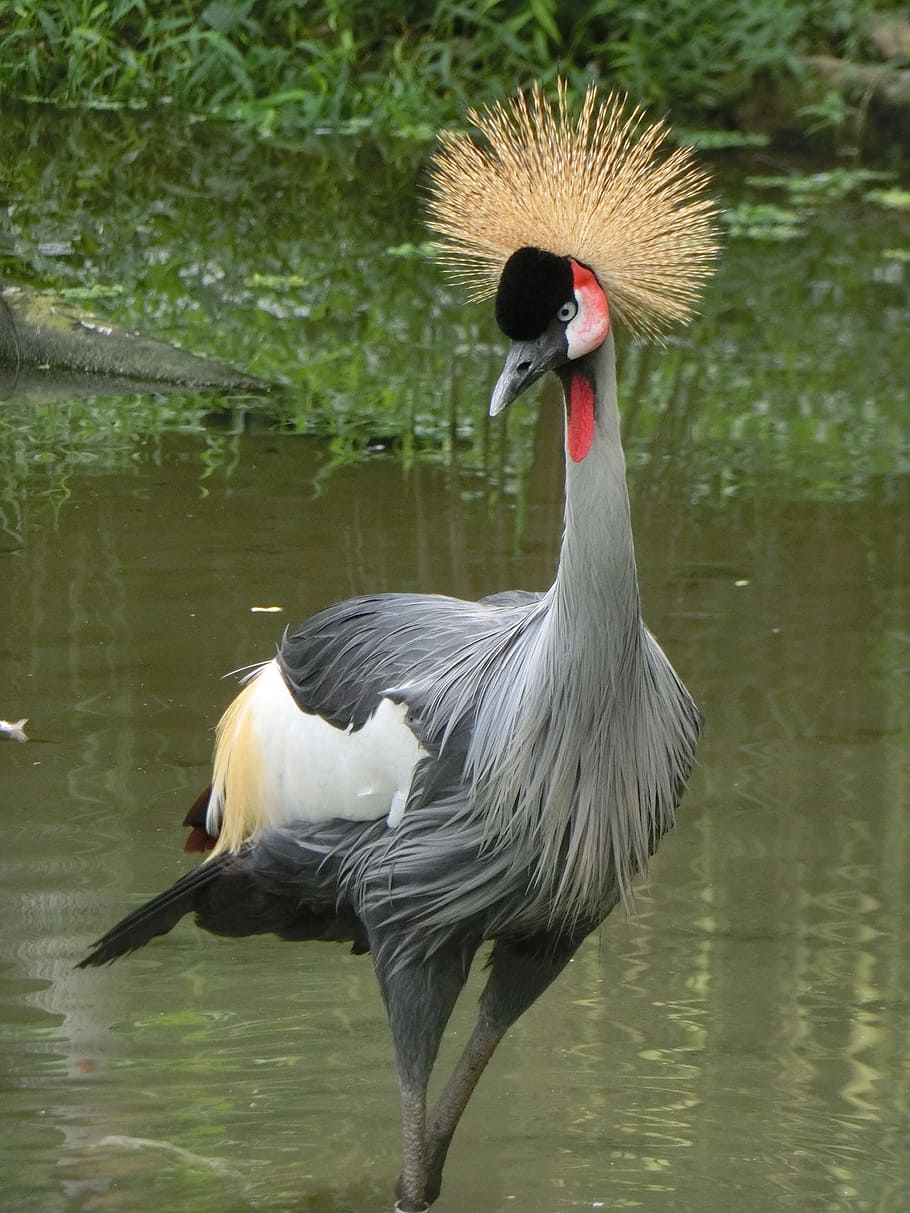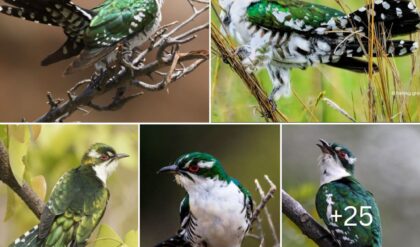The grey crowned crane (Balearica regulorum), also known as the African crowned crane, golden crested crane, golden crowned crane, East African crane, East African crowned crane, African crane, Eastern crowned crane, Kavirondo crane, South African crane and crested crane, is a bird in the crane family, Gruidae. It is found in nearly all Africa[3] especially in eastern and southern Africa, and is the national bird of Uganda.

The grey crowned crane is approximately 1 m (3 ft 3 in) tall, weighs 3.5 kg (7.7 lb), and has a wingspan of 2 m (6 ft 7 in). Its body plumage is mainly grey. The wings are predominantly white, but contain feathers with a range of colours, with a distinctive black patch at the very top. The head has a crown of stiff golden feathers. The sides of the face are white, and there is a bright red inflatable throat pouch. The bill is relatively short and grey, and the legs are black. They have long legs for wading through the grasses. The feet are large, yet slender, adapted for balance rather than defence or grasping. The sexes are similar, although males tend to be slightly larger. Younger cranes are greyer than adults, with a feathered buff face.

This species and the black crowned crane are the only cranes that can roost in trees, because of a long hind toe that can grasp branches. This trait is assumed to be an ancestral trait among the cranes, which has been lost in the other subfamily. Crowned cranes also lack a coiled trachea and have loose plumage compared to the other cranes


